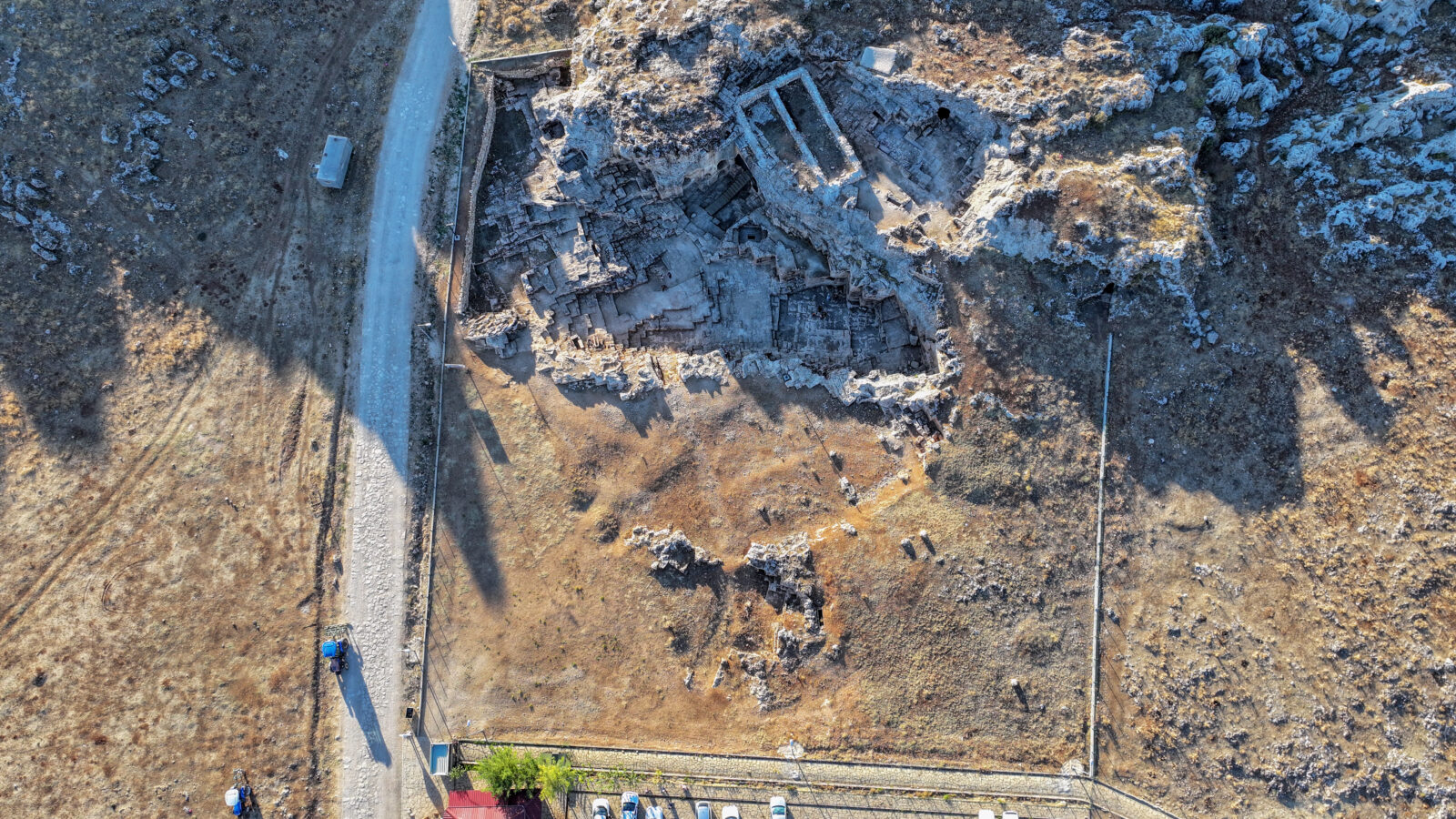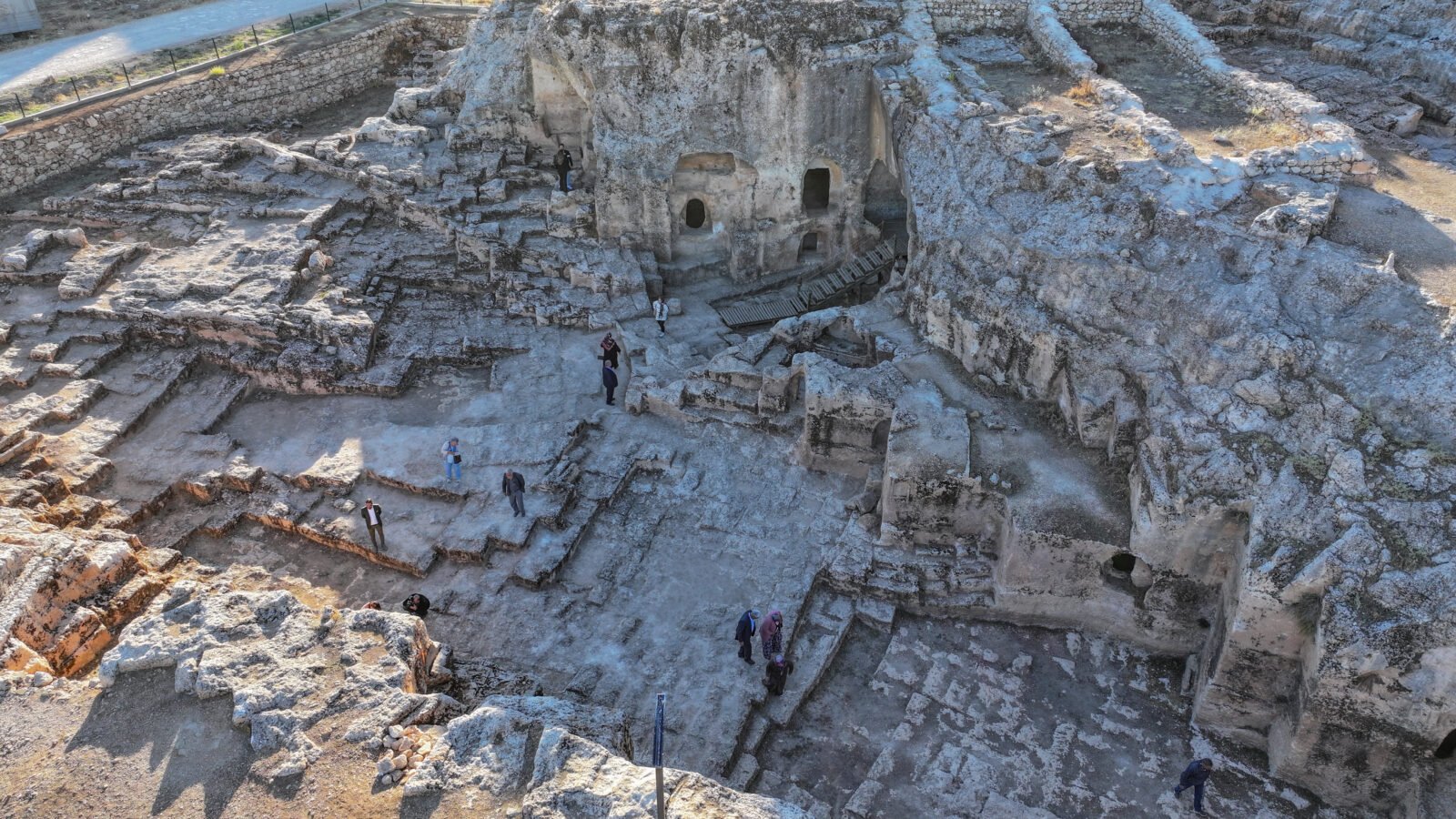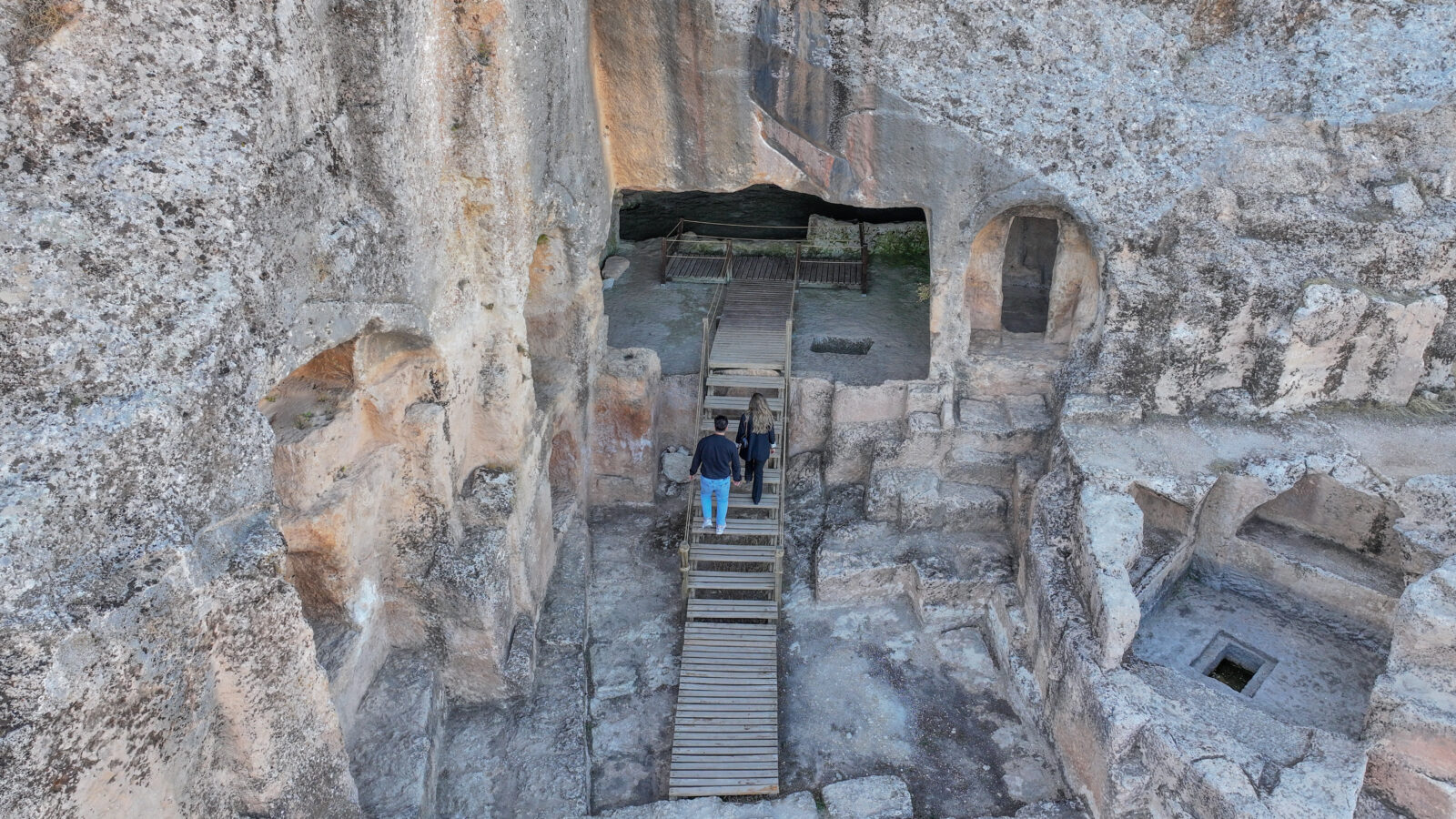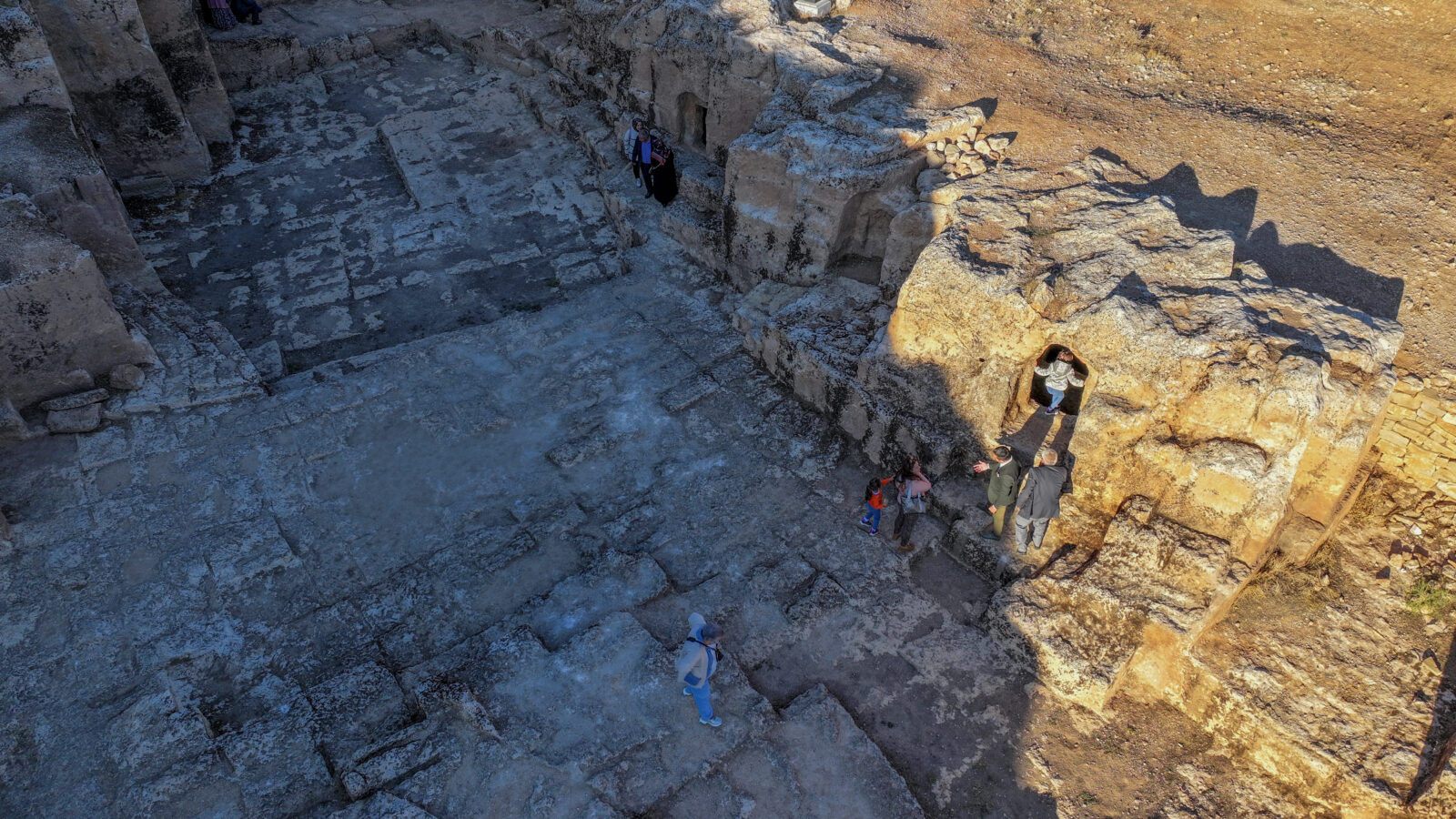Hilar Rock Tombs in Diyarbakir designated as archaeological site
 The "Hilar Rock Tombs" in the Ergani district of Diyarbakir have been officially designated as an archaeological site by the Directorate General of Cultural Heritage and Museums of the Ministry of Culture and Tourism. The area features a rock shelter, 16 rock tombs, and various reliefs on its walls. Photo taken in Diyarbakir, Türkiye, November 1, 2024. (AA Photo)
The "Hilar Rock Tombs" in the Ergani district of Diyarbakir have been officially designated as an archaeological site by the Directorate General of Cultural Heritage and Museums of the Ministry of Culture and Tourism. The area features a rock shelter, 16 rock tombs, and various reliefs on its walls. Photo taken in Diyarbakir, Türkiye, November 1, 2024. (AA Photo)
In a historic move to bolster tourism, the Ministry of Culture and Tourism’s Directorate General of Cultural Heritage and Museums has officially designated the “Hilar Rock Tombs” in Diyarbakir’s Ergani district as an archaeological site.
This significant declaration marks Diyarbakir’s first registered archaeological area, with local authorities aiming to establish the site as a major tourism destination by 2025.
Located about 6 kilometers northwest of Ergani, the Hilar Rock Tombs are also known as Hilar Caves. Over the past two years, the Diyarbakir Museum Directorate has been preparing the area, setting up guidance and informational signs, erecting fencing, installing security cameras, and creating lighting, a welcome center, and walking paths. The site has now met the conditions for recognition as an archaeological area, adding it to Türkiye’s heritage register.

Uncovering rich heritage
The Hilar Rock Tombs include a rock shelter, 16 rock tombs and wall carvings from various periods, presenting new opportunities for Diyarbakir’s tourism economy. These ancient structures trace human presence in the region back to the Mesolithic Period (22,000-10,000 B.C.), suggesting links to the nearby Cayonu Hill, a site rich in Neolithic artifacts.
Excavations in 2006 uncovered a trove of cultural relics, including jewelry, beads, and gold Roman and Byzantine coins, many of which are now displayed at the museum in Ickale.


Aiming to expand Diyarbakir’s archaeological sites
According to Diyarbakir Museum Director Mujdat Gizligol, the Hilar Rock Tombs area has notable similarities with other historic necropolises in Türkiye, such as those at Perre in Adiyaman and Dara in Mardin.
Used as a stone quarry during the Roman Empire, the site later transformed into a burial ground, dating from the first to the fourth centuries. Gizligol noted that only about 5% of the Hilar site has been excavated, and further digs are likely to uncover additional rock tombs.
“We believe this is just the beginning. There are numerous yet-to-be-explored tombs in the area, and more discoveries could be made in the coming years,” Gizligol explained. He added that the Hilar Rock Tombs offer vital clues to the Roman Empire’s presence in northern Mesopotamia.

Future plans to further enrich Hilar Rock Tombs’ tourism potential
With Hilar now officially recognized, local authorities are working to increase the number of archaeological sites in Diyarbakir, with plans to register Zerzevan Castle, Egil Castle, and the Hasuni Caves of Silvan.
Gizligol stressed that the goal is to bring the total number of registered sites in Diyarbakir to four, aiming to draw tourism not only to the city center but also to rural areas.
“Diyarbakir is experiencing a vibrant revival in tourism, which will grow even stronger with Hilar, Egil, Hasuni, and Zerzevan joining its roster of historic sites,” Gizligol said. “We are committed to ensuring Diyarbakir claims a greater share of Türkiye’s tourism sector.”
The recent designation of the Hilar Rock Tombs as an archaeological site is a pivotal development for Diyarbakir, marking its first registered archaeological area.
With plans for significant enhancements and the aim to elevate the site as a key tourist destination by 2025, this initiative promises to not only enrich the cultural landscape of the region but also boost the local economy through increased tourism.



